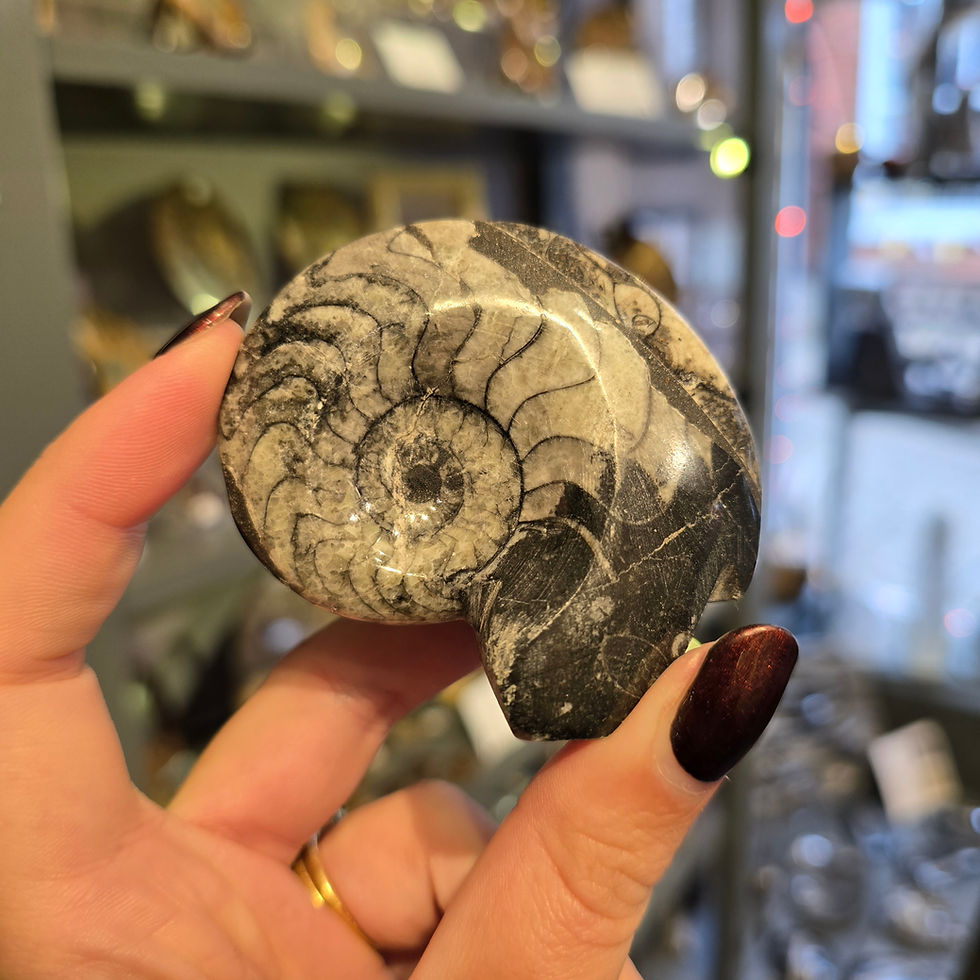Discovering Dactylioceras Ammonites
- lapidartlincoln
- Oct 1
- 2 min read

Dactylioceras is one of the most commonly found and easily recognisable types of Ammonites, which are from an extinct group of marine animals that once thrived in Earth’s oceans.
These creatures are relatives of today’s squids, octopuses & cuttlefish, but they lived inside spiral shaped shells. Ammonites as a species first appeared over 400 million years ago and went extinct around the same time as the dinosaurs, 66 million years ago, surviving three mass extinctions. Their fossilised shells can be found all over the world, with many varying genera of the Ammonite species.

The Dactylioceras ammonite lived during the Early Jurassic period, around 180 to 175 million years ago, when the area now known as Whitby was covered by a warm, shallow sea. When these sea creatures died, their shells sank to the seabed and were gradually buried by layers of mud. Over millions of years, this mud turned to shale, preserving the shells as fossils. You can often find them after rockfalls or storms which expose fresh layers of rock along the shoreline.
What to Look for When Searching for Dactylioceras Ammonites Along the British Coast?

The best place to find Dactylioceras is along the Jurassic Coast of North Yorkshire, especially between Whitby and Robin Hood’s Bay. The ideal time to look is after stormy weather or high tides, which can expose new fossils by breaking open the cliffs or shingle, however always be careful of possible rockfalls or loose rock under foot. Usually, these ammonites are hidden within concretion nodules, they are round, hard balls of stone that are smoother than surrounding rock. Sometimes they may show a slight bulge, pattern or crack that hints at the fossil inside, but a round heavy stone is normally a good indicator. They can be broken open with a hammer & chisel, carefully tap along the edge until the nodule breaks open!

Dactylioceras is relatively easy to identify thanks to its tightly coiled, flat spiral shell and strong ribbing (ridges) that run from the centre of the shell to the outer edge. The shell is usually grey to dark brown in colour, with some examples from Whitby preserved in iron pyrite, giving them a natural metallic shine. These ammonites were small to medium in size, with most measuring between 5 to 15 centimetres across.
Whether you're a seasoned fossil collector or just starting out, Dactylioceras ammonites offer a perfect glimpse into life in ancient seas. Plus, there's something magical about holding a fossil in your hand that’s over 175 million years old, an actual piece of Earth’s deep history, shaped by time and preserved in stone.







Comments